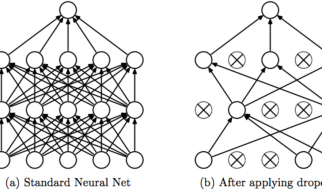In Gabriel Garcia Marquez? short story, ?A Very Old Man with Enormous Wings,? we encounter a strange complexity. While the story is easy to follow in all its details ? the prose is vivid and accessible ? we may nonetheless run into problems when we begin to ask what the story really means ? what it?s about thematically.
Marquez seems almost to be writing against interpretation in the story, crafting a tale that refuses to open itself up to clear explanation. It is stubbornly inscrutable.
But, maybe, this is actually what the story is about.

Consider these facts from the story: We are introduced to the world of ?A Very Old Man with Enormous Wings? with the fantastical fact that Pelayo and Elisenda?s house has been inundated with crabs during a storm. The crabs are presented to the reader not as the product of magic or the sign of something extremely strange but instead as just a normal part of this world. We have entered a world where strange things exist and people take them in stride.
Next, we are introduced to the old man with the enormous wings. He is startling to Pelayo and he presents a challenge to Pelayo?s in terms of placing him in a known category, but like the crabs the old man ends up being just another facet of life for the family. Certainly, the townspeople take note of the old man and want to figure out what he is, yet there is never a full explanation. Again like the crabs, we are left with the inscrutable fact of the old man as a bare ambiguity.
The characters attempt to interpret the fact of the man, try to explain him, but he remains a contradiction. He is a real thing, a physical object, undeniable in his reality and his presence, but he is not ?knowable? in any way. None of the systems of thought that the townspeople apply can adequately explain what he is.
He is seen as a sailor and an angel, but he is also seen as ?not a sailor? and ?not an angel.? He exists outside of the range of knowledge available to the villagers. It?s important to note, however, that this insurmountable inscrutability does not stop anyone from choosing one theory over another and essentially investing full belief in that preferred theory.
Pelayo and Elisenda end up allowing themselves to believe that the old man both is an is not an angel, which is perhaps the only way to make sense of Elisenda?s comment that ?it was awful living in that hell full of angels.?
Seen in this light, we will naturally take note of the story?s repeated interest in interpretations and explanations. We will recognize also that these intellectual products are often strange and always imperfect. Even the spider-woman, a figure ?full of so much human truth,? who is able to tell her own story of fantastic transformation, seems like a symbol of the notion that human truth is fictive. It is made up. It is a partial explanation, at best, of how the world around us actually works.
The story, in short, invites us to say that it is about interpretation. With ?A Very Old Man with Enormous Wings,? Marquez illustrates why the literary style of magical-realism is connected to postmodernist literature. They are connected because magical-realism proposes the fundamental postmodern critique of human knowledge, suggesting that our explanations of the world around us are imperfect. Yet, instead of acknowledging certain fundamentally unknowable qualities of human existence, we opt to believe in the explanations that our imperfect theories provide.
We let an inscrutable old man with wings become both a sailor and an angel and try not to think too hard about the contradiction staring us in the face.
For instructors interested in using this little essay in the classroom, you can find a free printable download here.

